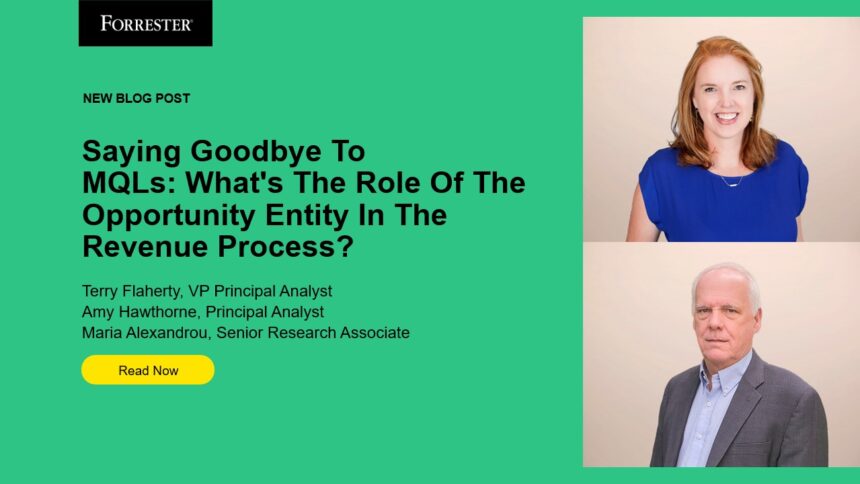This blog post is part of the Saying Goodbye to MQLs blog series, where we answer your questions when making the shift from leads to buying groups and opportunities.
In last week’s Saying Goodbye to MQLs blog, we explored the relationship between accounts, opportunities, and buying groups. So ideally, we’re all starting to speak the same language now!
At this point, you’re probably asking, “But how do we actually do this? How do we operationalize buying groups and opportunities? How do we align our systems with this concept?” Three words: the opportunity object.
The Opportunity Is The Best Object For Alignment
The opportunity object is a very powerful entity in all CRM systems that can help marketing, revenue development reps (RDRs), and sales teams align with each other to win deals. We believe that it’s the ideal object to manage both the buying group involved in making a purchasing decision and the revenue potential or opportunity for the company.
Clients often express some concern when we first say that the opportunity should be the focus of the revenue process and shared across marketing, RDRs, and sales. We often hear, “Sales would never go for this!” or “The opportunity is a sales asset.” This concern is commonly driven by different interpretations of the word “opportunity.”
When sales thinks opportunity, they are thinking of a potential deal. When marketing thinks opportunity, they are thinking of it as a container that holds all of the insights that enable alignment. Leveraging the opportunity entity as a shared container is the best approach for alignment because:
- It is closely tied to revenue.
- It is aligned to solutions.
- Sales teams already work opportunities as their primary focus.
- Multiple contacts (buying group members) can be connected to the opportunity (via the opportunity contact role or similar capability).
- The opportunity entity has a strong infrastructure to support process performance analysis by timestamping stage changes throughout the revenue process.
Most importantly, the opportunity entity (with the related contact role object) serves as a single, shared “system of truth” about the engagement of buying group members in the opportunity and can provide great insight into the likelihood of winning the opportunity. There’s no longer process barriers that divide the marketing, RDR, and sales teams. Instead, these teams collaborate to capture and share information about the health of the opportunity (and the additional actions needed) throughout the entire revenue process.
As an example, we may see that four key buying group members for an opportunity have engaged, but we are still missing engagement from two others needed to win the deal (i.e., the technical decision-maker and a key influencer). In an aligned revenue process focused on buying groups, the teams can collaborate on the best content, programs, and actions needed to secure engagement and support from these remaining buying group members.
Ultimately, we need to reorganize our systems to how our buyers buy. This shift requires changes to internal processes, metrics, and, most importantly, a cultural shift away from focusing on and assuming that an individual lead is a potential opportunity. Today’s go-to-market teams must shift away from processes that result in operational silos with disconnected goals and instead shift to a model that is based on collaboration. Winning a deal shouldn’t be about siloed processes and teams; instead, it’s all about collaboration. Aligning everyone to the opportunity entity is the foundation of this change.
Excited to learn more? Stay tuned for next week’s Saying Goodbye to MQLs blog series. Have more questions? Send them our way here, and we’ll answer in future blogs.








